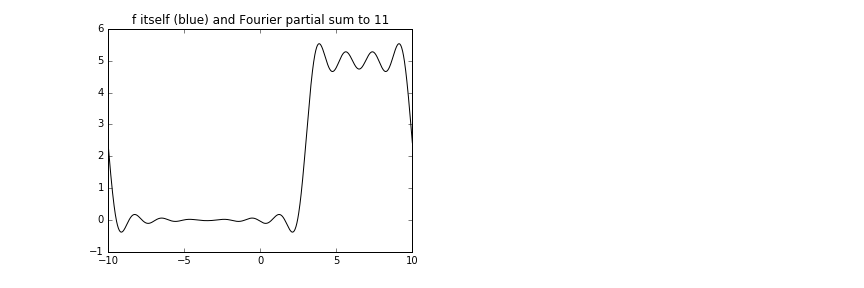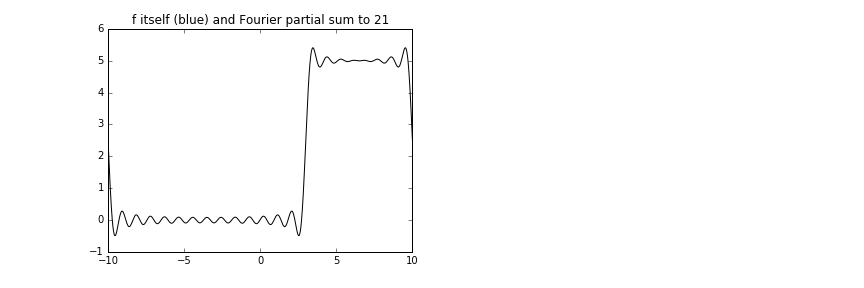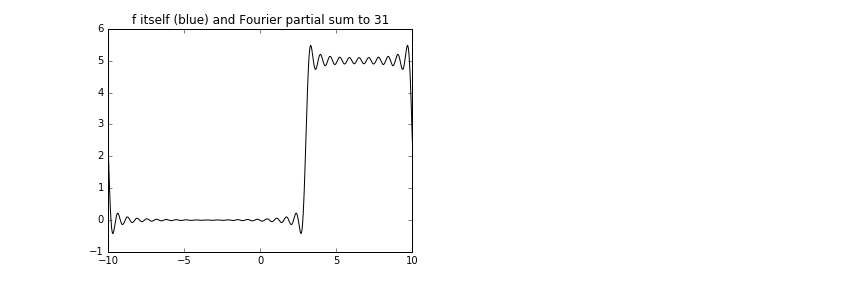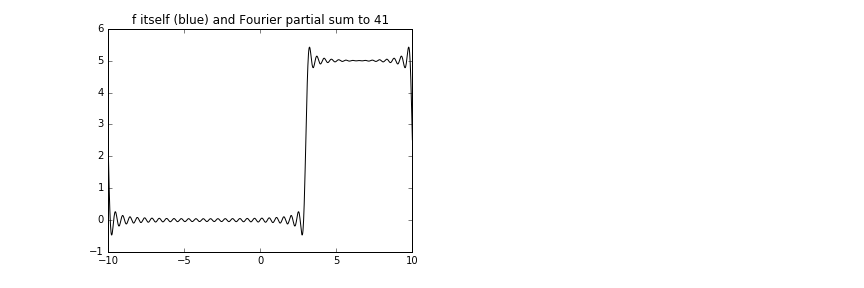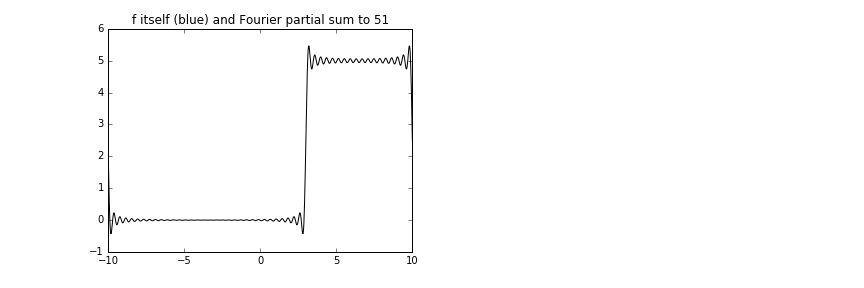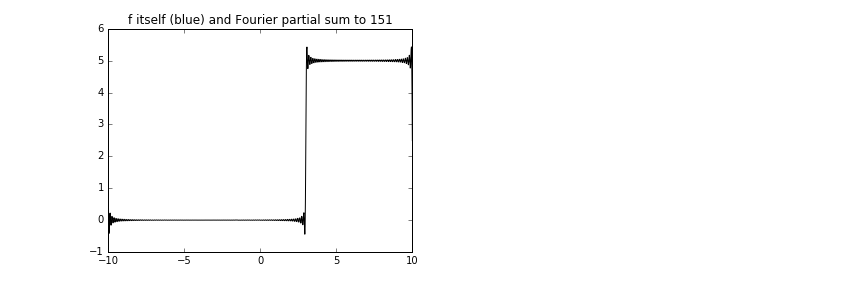Day 09
Tuesday, Feb 28, 2017
Contents
Ch 3 Fourier Series
Motivation
Can we find a mixture of the following solutions of our PDE to match any given boundary function around the outside?

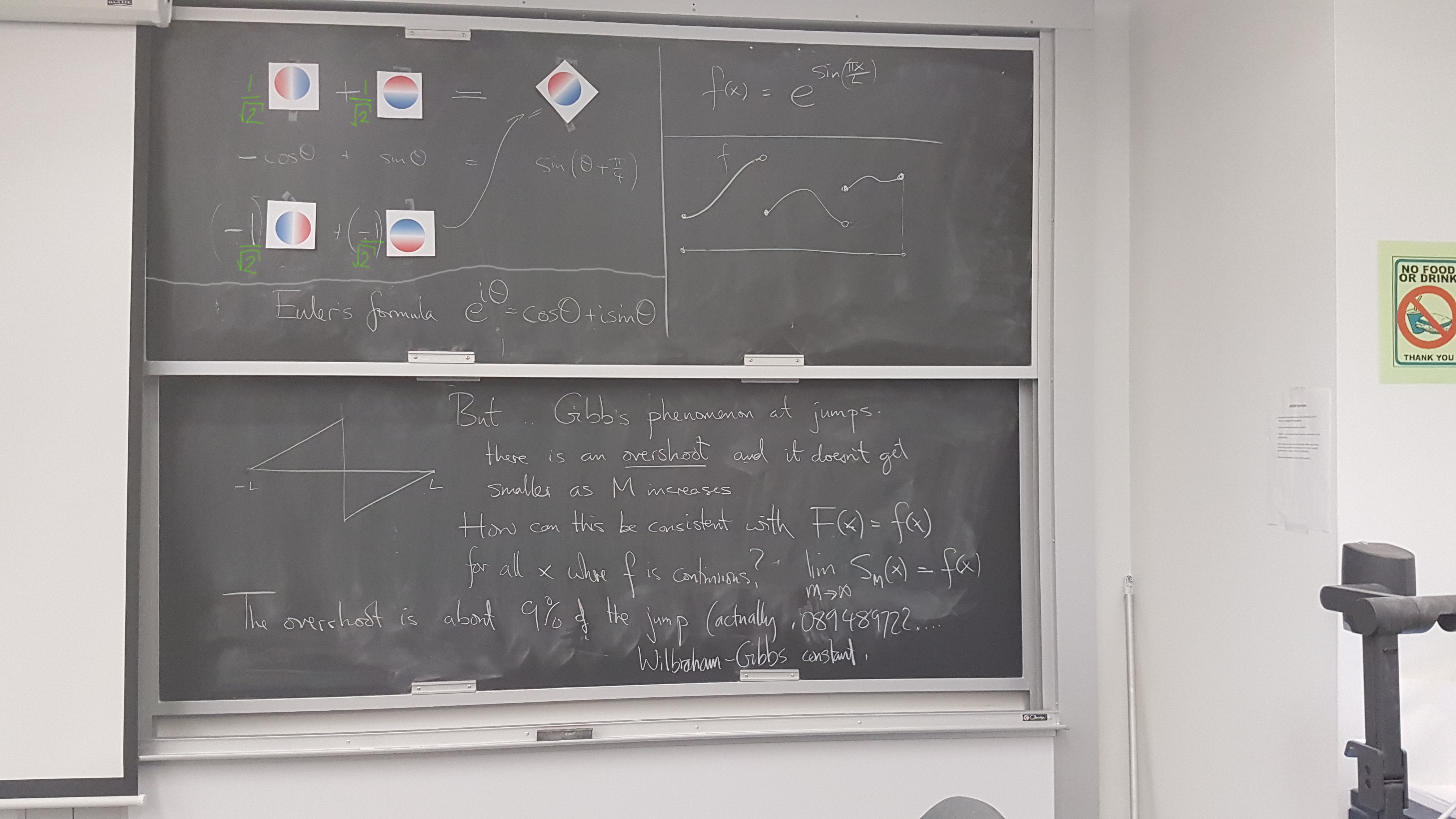
Definition
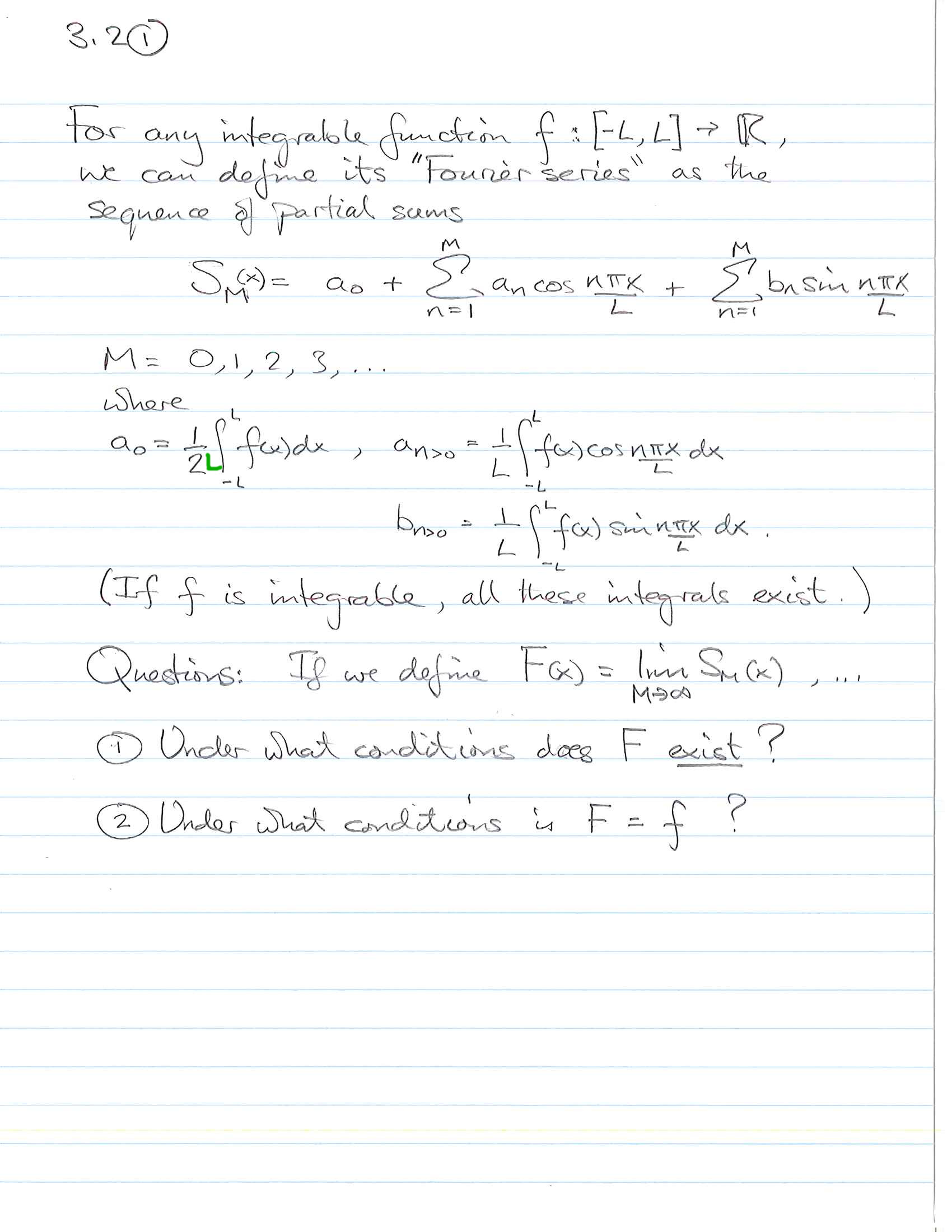

Periodic extension of f on [-L,L).
Convergence? Let's explore a little ... we can compute the integrals for the Fourier coefficients numerically:
%matplotlib inline import matplotlib.pyplot as pl from numpy import * from scipy.integrate import quadrature def draw(f,filenameprefix,M): def ai(x,n): return f(x)*cos(n*pi*x/L) def bi(x,n): return f(x)*sin(n*pi*x/L) a0 = (quadrature(ai,-L,0,args=(0))[0] + quadrature(ai,0,L,args=(0))[0])/2 # (Splitting it in two to make quadrature def a(n): return quadrature(ai,-L,0,args=(n))[0] + quadrature(ai,0,L,args=(n))[0] # easier if there is a discontinuity at 0) def b(n): return quadrature(bi,-L,0,args=(n))[0] + quadrature(bi,0,L,args=(n))[0] def ff(x,m): return a0*ones_like(x) + array([a(n)*cos(n*pi*x/L) + b(n)*sin(n*pi*x/L) for n in range(1,m+1)]).sum(axis=0) x = linspace(-L,L,600) fx = f(x) for m in range(0,M+1): pl.figure(figsize=(12,4)) pl.subplot(1,2,1); pl.plot(x,fx,'b',alpha=0.5,lw=3) foux = ff(x,m) pl.subplot(1,2,1); pl.plot(x,foux ,'k'); pl.title('f itself (blue) and Fourier partial sum to '+str(m)) pl.subplot(1,2,2); pl.plot(x,foux-fx,'r'); pl.title('Error with terms up to n='+str(m)+' included') pl.savefig(filenameprefix+'_'+str(m)+'.png')
A perfectly nice example
This function has continous periodic extension:
f(x) = esin((nπx)/(L))
and the Fourier series converges to f rapidly.
I am computing the integrals for the Fourier coefficients numerically.
L = 1 def f(x): return exp(sin(pi*x/L)) draw(f,'expsin',3)


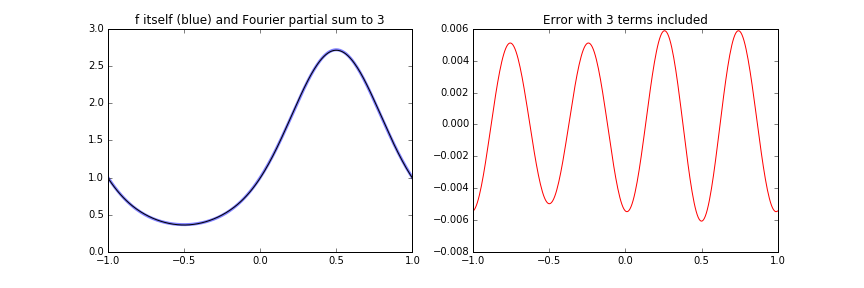

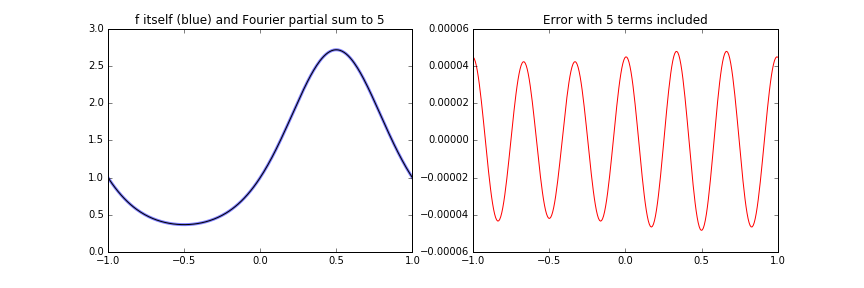
An example with a jump discontinuity
def f(x): fx = x+L fx[x>0] -= 2*L return fx draw(f,'expsin',3)
We see overshooting. Nevertheless, the Fourier series converges to f(x) at every x except the point of discontinuity:


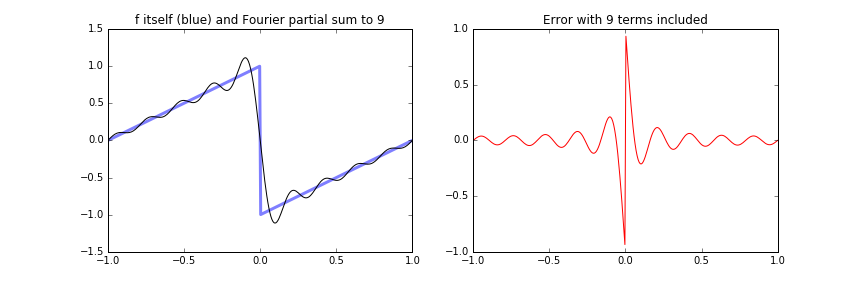


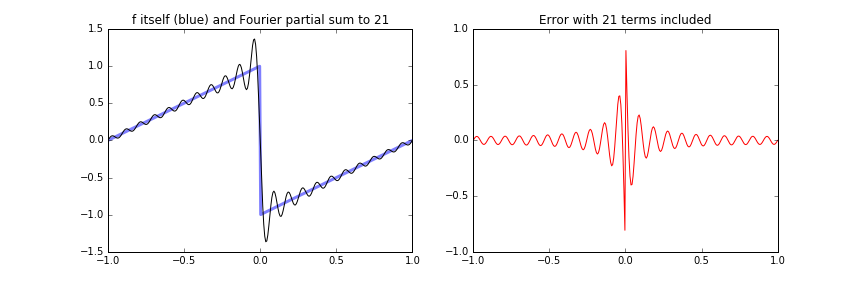
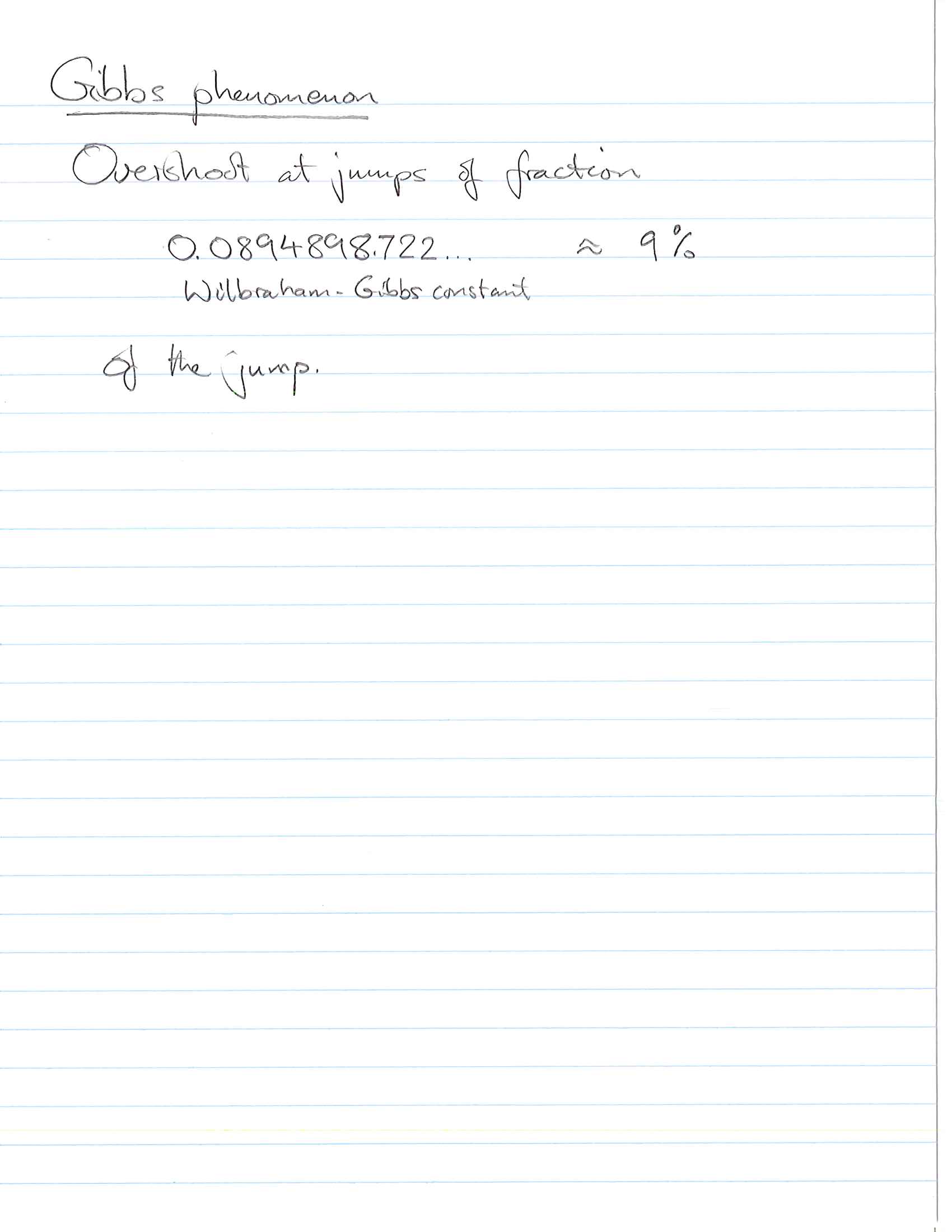
An example where we can easily compute the Fourier coefficients exactly
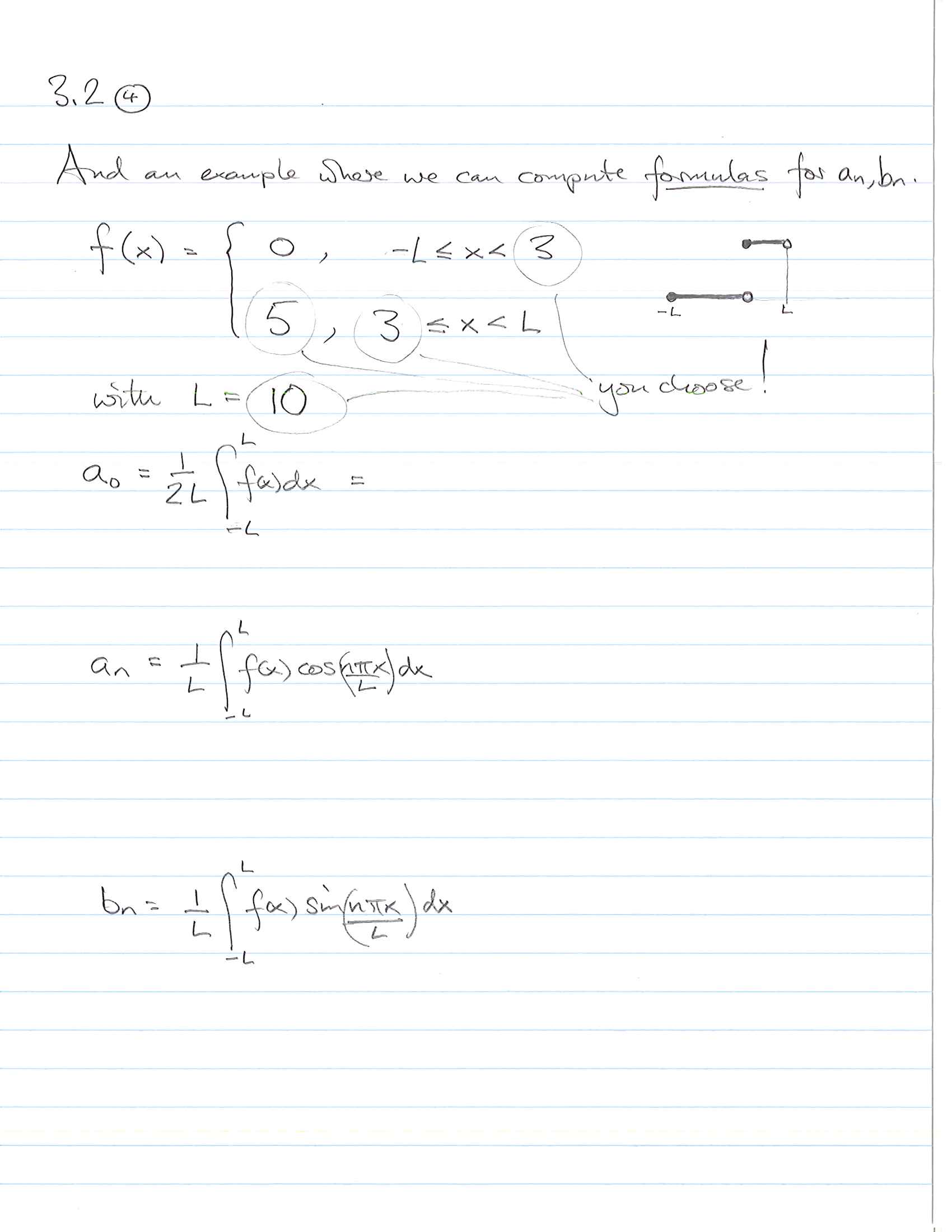
Code: Computing Fourier partial sums in some examples
The periodic extension of this function has a jump disconinuity at ±10, ±30, ±50... and at ..., − 23, − 3, 23, 43, ....
We see the Gibbs overshoot:

